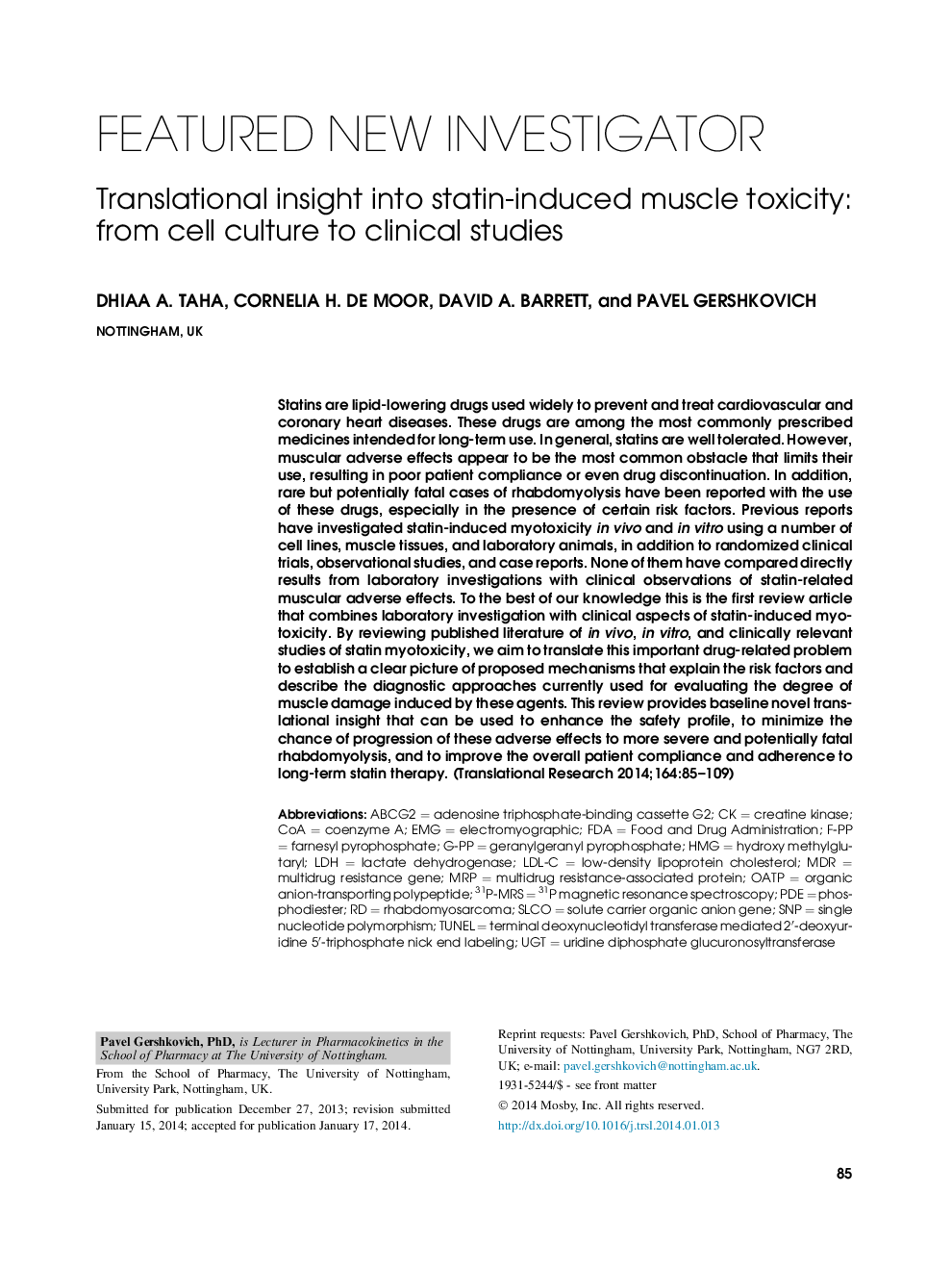| Article ID | Journal | Published Year | Pages | File Type |
|---|---|---|---|---|
| 3840158 | Translational Research | 2014 | 25 Pages |
Statins are lipid-lowering drugs used widely to prevent and treat cardiovascular and coronary heart diseases. These drugs are among the most commonly prescribed medicines intended for long-term use. In general, statins are well tolerated. However, muscular adverse effects appear to be the most common obstacle that limits their use, resulting in poor patient compliance or even drug discontinuation. In addition, rare but potentially fatal cases of rhabdomyolysis have been reported with the use of these drugs, especially in the presence of certain risk factors. Previous reports have investigated statin-induced myotoxicity in vivo and in vitro using a number of cell lines, muscle tissues, and laboratory animals, in addition to randomized clinical trials, observational studies, and case reports. None of them have compared directly results from laboratory investigations with clinical observations of statin-related muscular adverse effects. To the best of our knowledge this is the first review article that combines laboratory investigation with clinical aspects of statin-induced myotoxicity. By reviewing published literature of in vivo, in vitro, and clinically relevant studies of statin myotoxicity, we aim to translate this important drug-related problem to establish a clear picture of proposed mechanisms that explain the risk factors and describe the diagnostic approaches currently used for evaluating the degree of muscle damage induced by these agents. This review provides baseline novel translational insight that can be used to enhance the safety profile, to minimize the chance of progression of these adverse effects to more severe and potentially fatal rhabdomyolysis, and to improve the overall patient compliance and adherence to long-term statin therapy.
